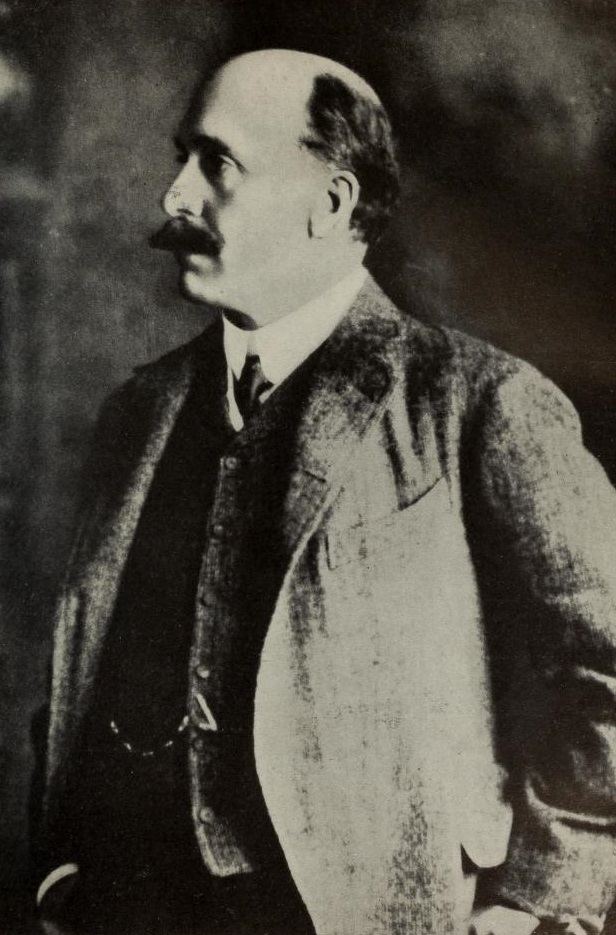Education Eton College Nationality British Spouse Annie Cass (m. 1881) | Role British Politician Name Weetman 1st | |
 | ||
Preceded by The Earl Curzon of Kedleston Died May 1, 1927, Aberdeenshire, United Kingdom Children Harold Pearson, 2nd Viscount Cowdray Great grandchildren Michael Pearson, 4th Viscount Cowdray | ||
Weetman Dickinson Pearson, 1st Viscount Cowdray, (15 July 1856 – 1 May 1927), known as Sir Weetman Pearson, Bt, between 1894 and 1910 and as The Baron Cowdray between 1910 and 1917, was a British engineer, oil industrialist, benefactor and Liberal politician. He was the owner of the Pearson conglomerate.
Contents
- Background
- Business career
- Mexican Eagle Petroleum Company
- Political career
- Family
- Death of youngest son
- References
Background
Pearson was born at Shelley, Woodhouse, Yorkshire, the son of George Pearson and Sarah Weetman Dickinson.
Business career
The Pearson firm, started by his grandfather Samuel in 1844 and today known as a publishing house, initially focused on construction. He took over the company in 1880, eventually moving the headquarters from Yorkshire to London. An early proponent of globalization, S. Pearson & Son built the Admiralty Harbour at Dover, docks in Halifax, tunnels, railways and harbours around the world, and the Sennar Dam in Sudan.
In 1900 his company took over the construction of the Great Northern and City Railway in London and after completion in 1904 ran it for four years.
Mexican Eagle Petroleum Company
In 1889, Porfirio Diaz, the President of Mexico, invited Pearson to his country to build a railroad—the Tehuantepec Railway—from the Atlantic to the Pacific Ocean. On one of Pearson's trips to Mexico, Pearson missed a rail connection in Laredo, Texas and was obliged to spend the night in the town which, according to Pearson, was "wild with the oil craze" from the recent discovery of oil at Spindletop. After doing some quick research that night about oil seepages in Mexico, Pearson began acquiring prospective oil lands in Laredo, thinking he could use discovered oil to fuel the Tehuantepec Railway he was helping President Diaz build.
After nine years of relative unsuccess Pearson fired the English consulting geologists he had been using, and hired Americans formerly employed by the U.S. Geological Survey. One year later, Pearson began making major oil strikes, beginning with Potrero del Llano 4, which flowed at 110,000 barrels a day and was considered the biggest oil well in the world.
In 1911, President Diaz was overthrown, and the Mexican Revolution began. The associated violence and turmoil had a negative effect on foreign investors in Mexico's oil industry. In October 1918 Calouste Gulbenkian offered, on behalf of the Royal Dutch Shell, to buy a substantial portion of Mexican Eagle stock and take over its management. Pearson agreed to the buyout.
Political career
Pearson was created a Baronet, of Paddockhurst, in the Parish of Worth, in the County of Sussex, and of Airlie Gardens, in the Parish of St Mary Abbots, Kensington, in the County of London, in 1894. He was first elected Liberal Member of Parliament for Colchester at a by-election in February 1895. He held the seat at the 1895 general election and retained it until 1910 when he was raised to the peerage as Baron Cowdray, of Midhurst in the County of Sussex. His time is connected with a number of developments, most notably the opening of Colchester Castle to the public. Under his leadership during World War I, the munitions factory HM Factory, Gretna and the tank assembly at Chateauroux were built.
In January 1917, he was sworn of the Privy Council and made Viscount Cowdray, of Cowdray in the County of Sussex. That same month, David Lloyd George requested that he become President of the Air Board. Cowdray agreed, provided that he receive no salary. Lord Cowdray worked diligently to improve the output of aircraft and produced a threefold increase in the number of aircraft under his tenure. Yet he was criticized after German bombing produced over 600 casualties on 13 June, and resigned the following November.
Following the war, he was active in Liberal politics and in philanthropic activities. He endowed a professorship in the Spanish department at the University of Leeds, and contributed to University College London, the League of Nations Union, the Royal Air Force Club and Memorial Fund, and to many public projects.
Family
Lord Cowdray married Annie Cass, daughter of Sir John Cass. They had four children: Weetman Harold Miller Pearson, 2nd Viscount Cowdray, Bernard Clive Pearson, Francis Geoffrey Pearson (d. 1914), and Gertrude Mary Pearson. Gertrude Mary, Baroness Denman GBE, became the wife of Lord Denman, Governor-General of Australia. Lord Cowdray died in his sleep at Dunecht House, Aberdeenshire on 1 May 1927, aged 70. He was succeeded by his eldest son, Harold.
Death of youngest son
Hon. Francis Geoffrey Pearson was born on 23 August 1891. He married Ethel Elizabeth Lewis, daughter of John J. Lewis, on 6 August 1909. In August 1914, he joined the Motor Transport Division of the BEF as a motorcycle courier, having the rank of Staff Sergeant. Early in September, as the Allied Armies were rolled back toward the Marne during the German drive on Paris, he was captured near the town of Varreddes, dying on 6 September 1914 at age 23. He was later buried at the Montreuil-aux-Lions British Cemetery.
Reports surfaced later that he had been treated with unconscionable brutality by his captors, directly causing his death. Great indignation was raised by these reports, one of many that were flooding out of Northern France at the time. The incident was referenced by Arthur Conan Doyle in his 1914 book "The German War" (Chapter VI, 'A Policy of Murder'), who called him "the gallant motor-cyclist, Pearson".
